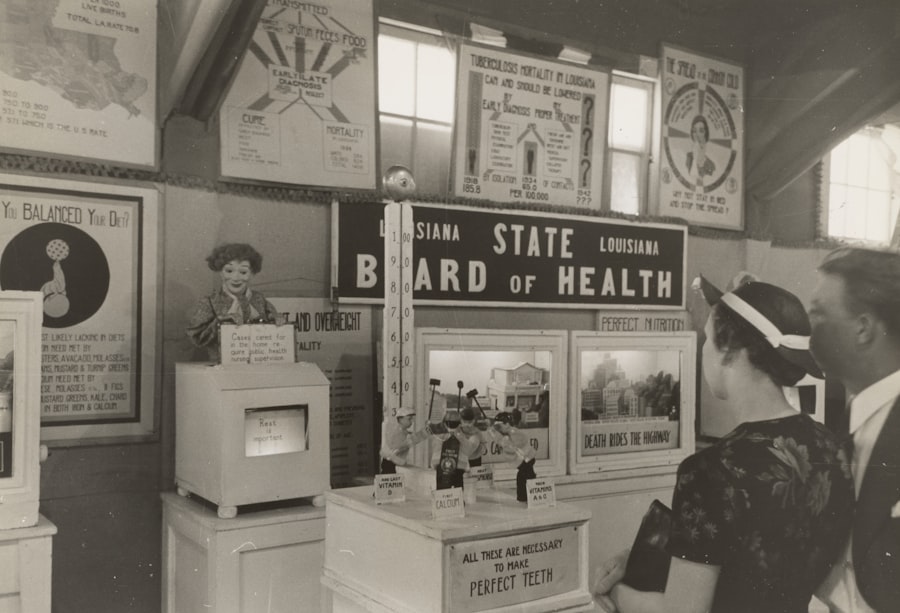To effectively market healthcare services, it is crucial to have a comprehensive understanding of the patient population being targeted. This involves not only demographic factors such as age, gender, and socioeconomic status but also psychographic elements like lifestyle, values, and health behaviors. For instance, a healthcare provider serving a predominantly elderly population may need to focus on chronic disease management and preventive care, while a practice catering to younger patients might prioritize wellness and fitness programs.
By segmenting the patient population into distinct groups, healthcare marketers can tailor their messaging and services to meet the specific needs of each segment. Moreover, understanding the patient population also entails recognizing the unique challenges they face in accessing healthcare. For example, low-income patients may struggle with transportation issues or lack of insurance, which can affect their willingness to seek care.
By identifying these barriers, healthcare organizations can develop targeted outreach programs that address these specific concerns. This might include offering telehealth services for those unable to travel or providing financial assistance programs for uninsured patients. By aligning marketing strategies with the realities of the patient population, healthcare providers can foster trust and build long-lasting relationships with their patients.
Key Takeaways
- Identify and understand the specific needs and characteristics of your patient population.
- Develop targeted marketing strategies tailored to different patient segments.
- Use digital marketing tools and social media platforms to reach and engage patients effectively.
- Implement SEO techniques and create engaging content to improve online visibility.
- Continuously measure marketing performance and adapt strategies based on data insights.
Developing Targeted Marketing Strategies
Once a thorough understanding of the patient population has been established, the next step is to develop targeted marketing strategies that resonate with these individuals. This process begins with defining clear objectives that align with the overall goals of the healthcare organization. For instance, if the goal is to increase awareness of a new service, the marketing strategy should focus on educating potential patients about the benefits and availability of that service.
This could involve creating informative brochures, hosting community events, or utilizing local media outlets to spread the word. In addition to setting objectives, targeted marketing strategies should also consider the various channels through which patients prefer to receive information. For example, younger patients may respond better to digital marketing efforts such as email campaigns or social media advertisements, while older patients might appreciate more traditional methods like direct mail or community seminars.
By diversifying marketing channels and tailoring messages to fit the preferences of different patient segments, healthcare organizations can enhance their outreach efforts and improve patient engagement.
Utilizing Digital Marketing Tools

In today’s digital age, leveraging digital marketing tools is essential for healthcare organizations aiming to reach their target audience effectively. These tools encompass a wide range of platforms and technologies that facilitate communication and engagement with patients. For instance, email marketing platforms allow healthcare providers to send personalized messages directly to patients’ inboxes, promoting services, health tips, or upcoming events.
Additionally, customer relationship management (CRM) systems can help track patient interactions and preferences, enabling more personalized communication. Another critical digital marketing tool is the use of analytics software, which provides insights into patient behavior and engagement levels. By analyzing data from website traffic, social media interactions, and email open rates, healthcare marketers can gain valuable insights into what resonates with their audience.
This data-driven approach allows organizations to refine their marketing strategies continuously and allocate resources more effectively. For example, if analytics reveal that a particular service page on a website is receiving high traffic but low conversion rates, marketers can investigate further to identify potential barriers and make necessary adjustments.
Leveraging Social Media Platforms
| Social Media Platform | Monthly Active Users (Millions) | Average Engagement Rate (%) | Primary Content Type | Best Use Case |
|---|---|---|---|---|
| 2900 | 1.6 | Text, Images, Videos | Brand Awareness & Community Building | |
| 2000 | 1.22 | Images, Stories, Reels | Visual Marketing & Influencer Collaboration | |
| 450 | 0.045 | Text, Images, Videos | Real-time Updates & Customer Service | |
| 900 | 0.54 | Articles, Text, Videos | Professional Networking & B2B Marketing | |
| TikTok | 1500 | 5.3 | Short Videos | Viral Content & Youth Engagement |
| 450 | 0.2 | Images, Infographics | Product Discovery & Visual Inspiration |
Social media platforms have emerged as powerful tools for healthcare marketing, offering unique opportunities for engagement and interaction with patients. These platforms allow healthcare organizations to share valuable content, promote services, and foster a sense of community among patients. For instance, a hospital might use Facebook to share success stories from patients who have undergone treatment, thereby humanizing their services and building trust within the community.
Additionally, social media can serve as a platform for real-time communication, allowing patients to ask questions and receive timely responses from healthcare professionals. Moreover, social media advertising offers targeted options that enable healthcare organizations to reach specific demographics based on location, interests, and behaviors. For example, a pediatric clinic could create ads targeting parents in their local area, promoting well-child visits or vaccination clinics.
The visual nature of platforms like Instagram also allows for creative storytelling through images and videos, making it easier to convey complex health information in an engaging manner. By leveraging social media effectively, healthcare organizations can enhance their visibility and connect with patients on a more personal level.
Implementing Search Engine Optimization (SEO) Techniques
Search Engine Optimization (SEO) is a critical component of digital marketing that focuses on improving a website’s visibility in search engine results pages (SERPs). For healthcare organizations, effective SEO strategies can significantly enhance online presence and attract more patients. This begins with keyword research to identify terms and phrases that potential patients are using when searching for healthcare services.
For instance, a local urgent care center might target keywords like “urgent care near me” or “walk-in clinic hours” to ensure they appear prominently in search results. In addition to keyword optimization, on-page SEO techniques such as optimizing meta tags, headers, and content structure are essential for improving search rankings. Healthcare organizations should also focus on creating high-quality content that addresses common patient questions and concerns.
This could include blog posts about health topics relevant to the community or FAQs about specific services offered. Furthermore, off-page SEO strategies such as building backlinks from reputable sources can enhance credibility and authority in the eyes of search engines. By implementing robust SEO techniques, healthcare providers can increase their online visibility and attract more patients seeking care.
Creating Engaging Content

Content creation is at the heart of effective healthcare marketing strategies. Engaging content not only informs patients but also builds trust and establishes authority within the healthcare field. Healthcare organizations should aim to produce a variety of content types that cater to different patient preferences.
This could include blog articles that provide in-depth information on health topics, infographics that visually represent data or statistics related to health issues, and videos that demonstrate procedures or share patient testimonials. Moreover, storytelling plays a vital role in creating engaging content. By sharing real-life experiences of patients who have benefited from specific treatments or services, healthcare organizations can create an emotional connection with potential patients.
For example, a cancer treatment center might share video testimonials from survivors discussing their journey and the support they received from the facility. This not only humanizes the organization but also inspires hope in others facing similar challenges. By focusing on creating diverse and engaging content, healthcare marketers can effectively capture the attention of their audience and encourage them to take action.
Measuring and Analyzing Marketing Effectiveness
To ensure that marketing efforts are yielding desired results, it is essential for healthcare organizations to measure and analyze their marketing effectiveness regularly. This involves setting key performance indicators (KPIs) that align with marketing objectives and tracking progress over time. Common KPIs in healthcare marketing may include website traffic metrics, conversion rates for specific services, social media engagement levels, and patient acquisition costs.
Utilizing analytics tools allows marketers to gain insights into which strategies are working and which may need adjustment. For instance, if a particular email campaign results in high open rates but low click-through rates, it may indicate that while the subject line was compelling, the content did not resonate with recipients. By analyzing these metrics in detail, healthcare organizations can make informed decisions about where to allocate resources and how to refine their marketing strategies for better outcomes.
Adapting and Evolving Marketing Strategies
The healthcare landscape is constantly evolving due to changes in technology, patient preferences, and regulatory requirements. As such, it is imperative for healthcare marketers to remain flexible and willing to adapt their strategies accordingly. This may involve staying informed about emerging trends in digital marketing or being responsive to shifts in patient behavior following significant events such as public health crises.
For example, during the COVID-19 pandemic, many healthcare organizations had to pivot quickly to offer telehealth services as patients sought safer alternatives for receiving care. Marketers had to adapt their messaging to emphasize the convenience and safety of virtual visits while also addressing any concerns patients might have about technology barriers or privacy issues. By fostering a culture of adaptability within marketing teams and continuously monitoring industry trends, healthcare organizations can ensure they remain relevant and effective in meeting the needs of their patient populations over time.



